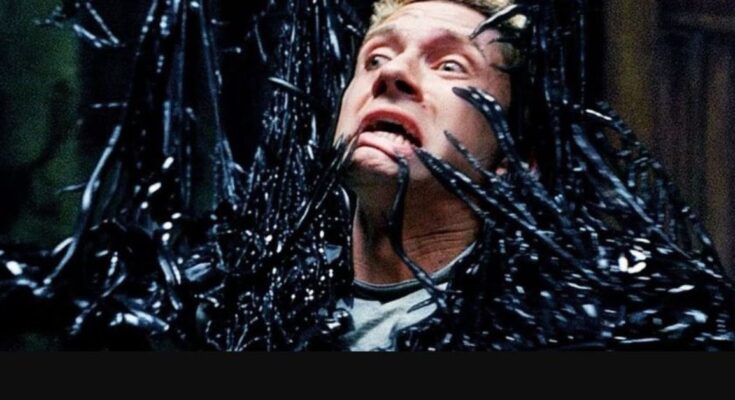Table of Contents
Introduction to the Villainous Trend in Media
Welcome to a world where the line between hero and villain blurs, and the allure of madness captures our imagination.
In a trend that has taken over literature and film, mad villains have become the dark stars that captivate us with their twisted minds and diabolical schemes.
Join us as we explore why these characters hold such power over our fascination and delve into the depths of their complex personalities. Enter, if you dare, for spoilers lie ahead in this journey through the minds of mad villains.
The Allure of Mad Villains and Why We Love Them
The allure of mad villains in literature and film is undeniable. These characters captivate our imagination with their complex personalities and twisted motivations. They possess a certain charm that draws us in, making us both fearful and fascinated.
Mad villains challenge societal norms and push boundaries, forcing us to confront our morality. Their unpredictability keeps us on the edge of our seats, never knowing what they will do next. This element of surprise makes them so compelling to audiences worldwide.
We root for these villains despite their heinous acts because deep down, we recognize a part of ourselves reflected in their darkness. Their charisma and intelligence make them alluring figures that we can’t help but be drawn to.
In a world where everything is black and white, mad villains exist in shades of gray, blurring the lines between good and evil. We love them not for their depravity but for the complexity they bring to storytelling – challenging us to question our beliefs and values along the way.
Popular Mad Villains in Literature and Film
In literature and film, mad villains have always captured our imagination. From the cunning Joker in Batman to the complex Hannibal Lecter in Silence of the Lambs, these characters impact audiences worldwide.
One of the most iconic mad villains is Nurse Ratched from One Flew Over the Cuckoo’s Nest. Her calculated cruelty and manipulation make her a formidable antagonist that viewers love to hate. Another unforgettable character is Patrick Bateman from American Psycho, whose psychopathic tendencies blur the lines between reality and fiction.
We can’t overlook characters like Professor Moriarty from Sherlock Holmes or Sauron from The Lord of the Rings in literature. These villains are not just evil for evil’s sake but are driven by their motivations and desires, making them all the more intriguing.
The allure of these mad villains lies in their complexity and unpredictability. They challenge our perceptions of good and evil, forcing us to confront our moral compasses as we navigate their twisted worlds.
A Closer Look at the Character Development of Mad Villains
When exploring the depths of mad villains, character development plays a crucial role in shaping their twisted personas. It’s not just about being evil for the sake of it; these characters often have complex backgrounds and motivations that drive their actions.
From childhood traumas to personal vendettas, each mad villain has a unique backstory that adds layers to their menacing presence on screen or in literature. The gradual unraveling of their psyche keeps viewers and readers captivated, wondering what dark secrets lie beneath their wicked façade.
The transformation from an ordinary individual to an evil force is a fascinating journey. As we delve deeper into their past and see how they became the villains we love to hate, it challenges our perceptions of good and evil.
The character development of mad villains is a compelling narrative device that allows us to explore the darker side of human nature with fear and fascination.
The Controversy Surrounding These Characters and Their Impact on Society
Mad villains in literature and film have always sparked debates about their impact on society. Some argue that these characters glorify evil behavior, potentially desensitizing audiences to violence and immorality. On the other hand, proponents claim that mad villains are cautionary tales, highlighting the consequences of unchecked power and corruption.
The controversy surrounding these characters often stems from their complex nature – are they inherently evil or a product of their circumstances? This moral ambiguity challenges societal norms and forces audiences to question their beliefs about good and evil. Moreover, some critics worry that viewers may empathize too deeply with these villains, blurring the lines between heroism and villainy.
Despite the ethical dilemmas they present, mad villains continue to captivate audiences worldwide. Their enigmatic personalities and twisted motives add depth to storytelling, inviting us to explore the darker corners of the human psyche. Whether we condemn or sympathize with them, one thing is certain—mad villains will forever remain an integral part of our cultural narrative.
Warning: Spoilers Ahead – A Deep Dive into the Minds of These Mad Villains
Are you ready to delve into the twisted minds of some of the most captivating villains in literature and film? Brace yourself, for we will uncover the dark complexities that make these mad villains so intriguing.
From the Joker’s chaotic unpredictability to Hannibal Lecter’s chilling intellect, these characters push boundaries and challenge our perceptions of morality. Their motivations may seem irrational, but upon closer inspection, there is often a method to their madness.
Exploring the depths of their psyche can be both unsettling and mesmerizing. What drives them to commit such heinous acts? Is it a traumatic past, a thirst for power, or simply a lack of empathy?
As we unravel their intricate layers, we may empathize with these villains on some level. Perhaps it is their vulnerability or tragic backstory that elicits sympathy. Or it is the sheer audacity of their actions that captivates us.
So please take a deep breath and prepare to confront your demons as we journey into the minds of these mad villains. It will be a thrilling ride filled with twists and turns that will leave you questioning your definition of good and evil.
Conclusion
Are we genuinely falling for evil or just fascinated by the complexity of these mad villains?
As society grapples with portraying such characters in media, it is essential to acknowledge that our fascination does not equate to endorsement. Mad villains serve as a mirror reflecting the darker aspects of humanity, challenging us to confront our inner demons and moral compasses.
While they may captivate us with their twisted charm and enigmatic personalities, it is crucial to remember that they are fictional creations meant for entertainment and introspection.
Let’s continue exploring this complex relationship with these captivating yet sinister characters while fully grasping reality.
Latest Post!











